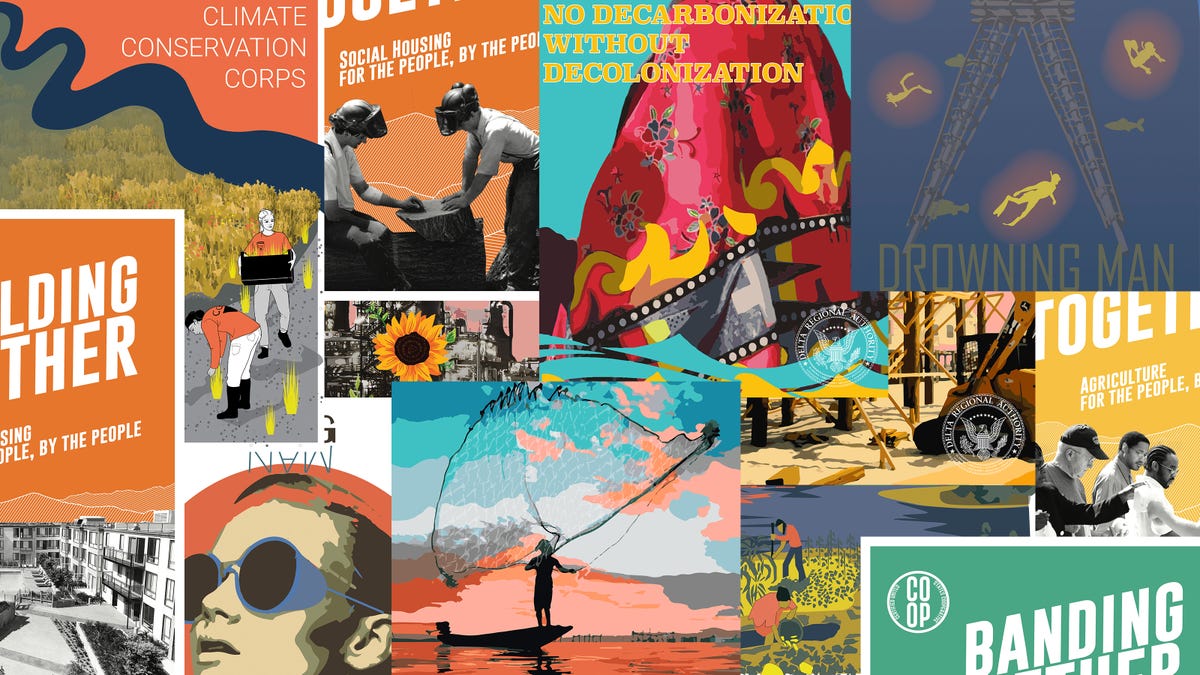These Posters Show What a Green New Deal Could Look Like - 5 minutes read
 These Posters Show What a Green New Deal Could Look Like
These Posters Show What a Green New Deal Could Look LikeThe Green New Deal is visionary approach to climate politics and American life. If passed, it would completely transform how Americans live from where we call home to how we get our power to the fundamental outlines of the economy. It’s no small thing, and frankly, I get why it can be scary to some.
The path we’ve walked down since the start of the Industrial Revolution has treated humanity well on some level. And a fossil fueled-economy is modern orthodoxy. Yet now, it could be the thing that ends up undoing centuries of human progress. While small changes around the margins may have been helpful a few decades ago, now the world needs to radically transform itself. Like I said, scary. But it doesn’t have to be.
We’ve had a look at what the broad outlines of a Green New Deal suite of policies look like—rapid decarbonization, a healthcare system that shifts in tandem with the necessary societal changes, housing for all, a just transition for fossil fuel workers and frontline communities—but a policy vision doesn’t always translate easily into a societal one.
“It’s vital to build a visual language for what a world built and an economy restructured by the Green New Deal because ultimately that’s how most people will experience,” Billy Fleming, the director of Penn’s McHarg Center, told Earther in an email.
A class that Fleming taught at Penn—which has quickly become one of the hubs of envisioning a Green New Deal—took a stab at creating a vision of the society we could live in under a Green New Deal, drawing inspiration from, well, the New Deal.
Posters created by the Works Progress Administration were some of the most iconic parts of the New Deal. The posters highlighted the National Park Service system, the role of the arts in public life, and efforts during World War II. They’re suffused with a communal spirit. That’s not to say they’re perfect (they systematically erased people of color, for example), but they do offer a prime glimpse of the type of positive visioning project that’s been severely lacking in American life in recent decades.
“The left hasn’t really proposed any kind of vision in the last, 50, 60, 70 years except for the New Deal,” Yvette Chen, a second year masters student at Penn who worked on the project, told Earther. “This is about engaging people that are unengaged in politics. Because for so long, we’ve lived in a society where people don’t really have a lot of faith in government. It’s important to engage people in seeing [that] we can have a better future.”
The project was split across three regions of the country: the Mississippi Delta, Corn Belt, and Appalachia. All three are regions that will be hit hard by climate change whether its sea level rise and storms on the Gulf Coast, torrential rain and farm-related impacts in the Midwest, or the loss of the fossil fuel industry as a major driver of the economy in Appalachia. Each is a proving ground for showing what the Green New Deal could mean, and the posters show that. In a Delta poster, a community works together to build a house on stilts under a pink sky (Chen said the background was intentional to showcase that construction isn’t just a dude’s job). In Appalachia, the students imagined a cooperative which each poster emblazoned with “by the people, for the people.” The Corn Belt features one my favorites, a future festival a la Burning Man but Drowning Man (2051 headliner: The Koi Bois).
Ultimately, climate change is, as Eric Holthaus put it so eloquently in The Correspondent, “about how we treat each other:”
That takes real work. It takes understanding, revisions, and time. But climate change and the need to act will compress all of that. And without art and a vision, we are almost certain to fail at creating the radical change that’s needed. A few posters alone won’t do it, but they are part of building a narrative that a better world is possible.
“I hope we continue to push for and experiment with ways to make the material benefits of a Green New Deal real for everyone,” Fleming said. “There’s so much in the Green New Deal for all of us. Making the case, rhetorically and visually, for what we all stand to gain from a world transformed by the Green New Deal is the only way we can win it—people need to see the value it offers in their community and their household, not only in abstract, national-scale energy system transitions.”
Source: Gizmodo.com
Powered by NewsAPI.org
Keywords:
Green New Deal • Green New Deal • Industrial Revolution • Fossil • Modern Orthodox Judaism • Green New Deal • Low-carbon economy • Society • Housing for All • Fossil fuel • Labour economics • Community • Policy • Society • Vitalism • World • Economy • Green New Deal • Ian McHarg • Email • Green New Deal • Green New Deal • Works Progress Administration • New Deal • National Park Service • Politics • World War II • New Deal • Student • Politics • Society • Mississippi Delta • Corn Belt • Appalachia • Climate change • Sea level rise • Storm • Gulf Coast of the United States • Rain • Impact event • Midwestern United States • Fossil fuel • Appalachia • Green New Deal • Appalachia • Cooperative • By the People, for the People • Corn Belt • Burning Man • Climate change • Eric Holthaus • Time • Climate change • Green New Deal • Green New Deal • Green New Deal • Value (ethics) •